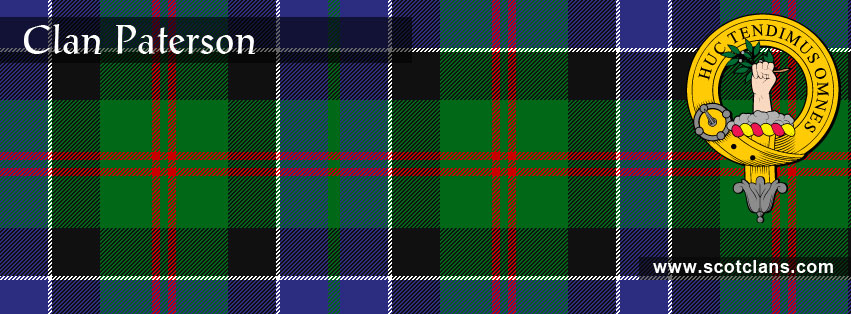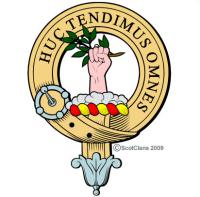
Clan Paterson
Paterson, or Patterson, is the Scottish version of 'Patrick's son' or Patrickson', and is a very common surname in Scotland.
Clan Pheadirean's (Paterson) native lands were traditionally on Loch Fyne's north side where many people by this name could be found.
Patterdale in Westmoreland (now modern day Cumbria, north west England) was once called Patrickdale, meaning 'the dale or valley of Patrick', and was once part of the ancient Scottish kingdom of Strathclyde.
In Aberdeen, in 1446, William Patrison and John Patonson were 'gentillmen' witnesses.
Donald Patyrson, in 1494, was made burgess of Aberdeen, and letters were issued against Patrick Patersoune in 1524 for defrauding the king's customs.
A Robert Patersoun was recoded in 1544 as being 'captaine of ane were schip of Dundee', and there was a John Patersoune who reported owned land in Glasgow during the year of 1553.
Fyndlay Patersoune, in 1557, had a tack of the lands of Owar Elrick from Cupar Abbey.
Also in 1557, John Patersoun, custumar of Cupar, and David Petirsoun rendered to the Exchequer the burgh of Cupar's accounts.
Burgess of Northberwyk (North Berwick) in 1562 was a John Patersoune, and a George was a monk in 1569 at Culross monastery in Fife.
The sheriff-depute of Inverness in 1530, James Patirsone, may be the same person as the James Patirsoun who was provost of Inverness, forty-three years later, in 1573.
One of the most famous Patersons in history is Sir William Paterson (April, 1658 - 22 January, 1719). Born in Tinwald in Dunfries and Galloway, he was the founder of the Bank of England in 1694, influential in the creation of the Bank of Scotland the following year, and was the man who conceived the ill-fated Darien Scheme.
According to one of the genealogies by the Farquharsons, "the Patersons in the North" are descendants of Patrick, the grandson of Ferquhard, and from whom the Farquharson clan take their name.








